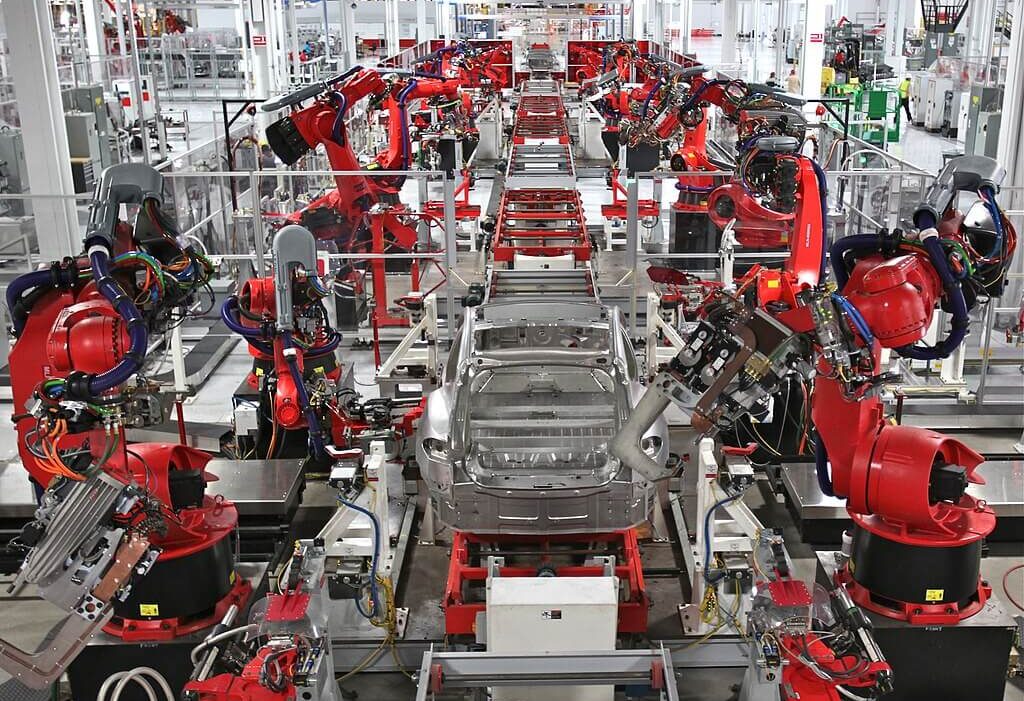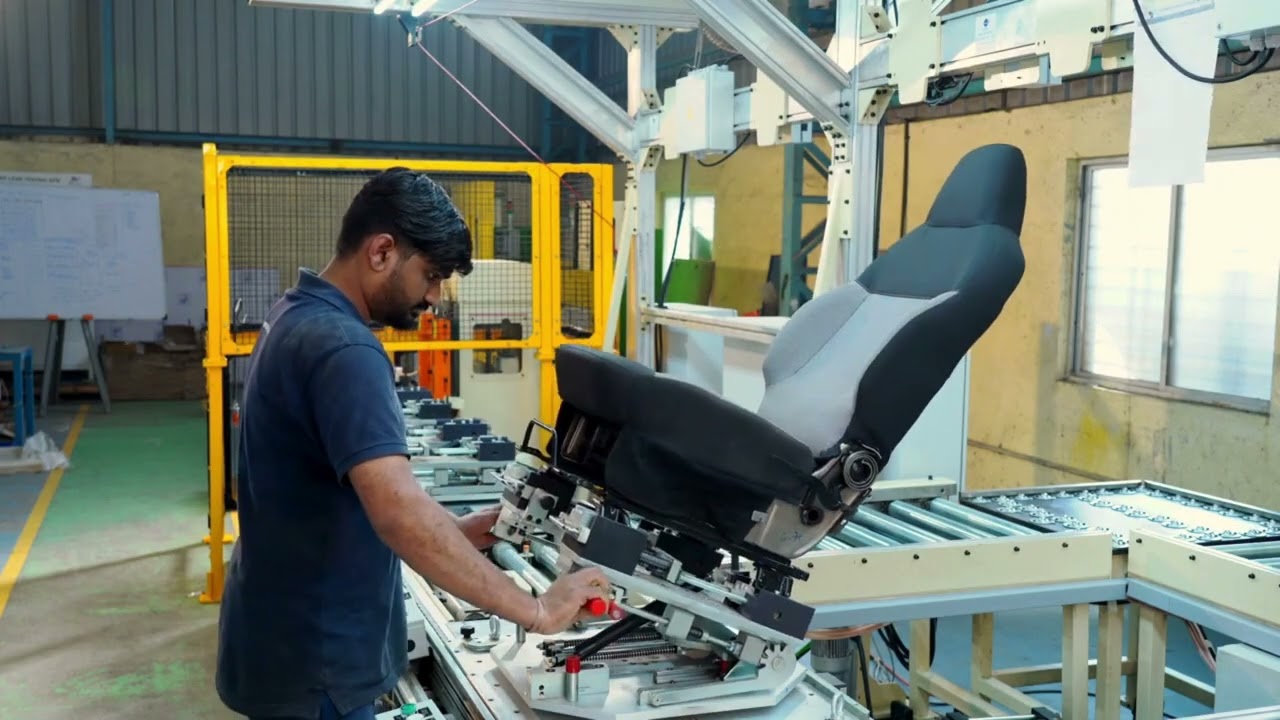The modern automotive industry stands as a testament to the incredible advancements in technology and innovation. At the heart of this transformation lies the silent, efficient, and tireless workforce of automotive robots. These mechanical marvels are revolutionizing the way vehicles are manufactured, enhancing productivity, quality, and safety across the board.
From welding and painting to assembling intricate components, automotive robots have redefined the manufacturing process, setting new standards for precision and efficiency. But how did these robots come to dominate the assembly lines, and what makes them indispensable in today’s automotive sector?
Let’s dive into the fascinating world of automotive robots to find out.
What Are Automotive Robots?
Automotive robots are highly specialized industrial machines designed to perform a variety of tasks within the automotive manufacturing process. They are intricate systems comprising mechanical, electrical, and computer components, all working together seamlessly to achieve precise and efficient operations. These robots are programmed to handle repetitive and complex tasks with unparalleled accuracy, making them essential for maintaining consistency and quality in production.
The roles of automotive robots extend far beyond simple assembly. They are used for welding, painting, material handling, and even quality inspection, ensuring that every vehicle meets stringent industry standards. Their ability to work in demanding industrial environments, coupled with their durability and adaptability, makes them an invaluable asset to manufacturers worldwide.
A Brief History of Automotive Robots
To truly appreciate the capabilities of modern automotive robots, it’s important to understand their origins. Automation, in its earliest forms, can be traced back to ancient civilizations, where devices like water clocks and windmills demonstrated basic principles of automated systems. However, the foundation for modern industrial robots was laid much later, in the mid-20th century.
The term “robot” itself was introduced by Czech playwright Karel Čapek in his 1920 play R.U.R. (Rossum’s Universal Robots). While the play depicted robots as artificial servants, the concept of automated machines had been explored in literature and mythology for centuries.
The journey towards industrial robotics began in the early 20th century with the invention of programmable machines. George Devol, an American inventor, is credited with creating the first programmable industrial robot in the 1950s. This innovation laid the groundwork for the integration of robotics into manufacturing.
A major milestone was achieved in 1961 when General Motors deployed prototype industrial robots for spot welding. This groundbreaking move demonstrated the potential of automation in manufacturing and inspired other industry leaders, including Ford, to explore robotic solutions. By 1969, the development of the Stanford Arm marked a quantum leap in robotics. Equipped with six degrees of freedom, this robotic arm far outperformed its predecessors.
The 1970s saw further advancements with the introduction of the Silver Arm by MIT in 1974. This robot featured pressure-sensitive sensors and a microprocessor, enabling it to perform tasks with unprecedented precision. The 1980s witnessed a surge in global investment in automation, with billions of dollars poured into developing robotic systems for basic assembly line tasks. Although the pace of automation slowed in the 1990s, continuous technological breakthroughs ensured the industry’s resurgence in subsequent decades.
Suggested Content: Canvas Manufacturing Automation: The Essential Guide for Manufacturers
Key Features of Modern Automotive Robots
Today, automotive robots are at the forefront of manufacturing technology, equipped with cutting-edge features that make them indispensable. Here are some of their most notable characteristics:
1. Precision and Repeatability
Modern automotive robots are capable of performing tasks with a level of accuracy and consistency that is unattainable by human workers. This precision is crucial in the automotive industry, where even the smallest imperfection can lead to significant defects in the final product.
2. Durability and Reliability
Automotive robots are built to operate in demanding industrial environments. They are designed to withstand heavy loads, vibrations, and exposure to harsh chemicals, ensuring their longevity and reliability even under extreme conditions.
3. Adaptability
Thanks to advancements in programming and sensor technology, modern robots can adapt to a wide range of tasks. From welding and painting to assembling and inspecting components, their versatility makes them a valuable asset in diverse manufacturing processes.
4. Safety Enhancements
Robots play a significant role in improving workplace safety. By taking over hazardous tasks, such as handling heavy machinery or working with toxic materials, they reduce the risk of accidents and injuries for human workers.
The Impact of Automotive Robots on Manufacturing
The integration of robots into automotive manufacturing has brought about transformative changes. Here are some of the key benefits they offer:
1. Increased Productivity
Automotive robots work tirelessly, 24/7, without breaks or fatigue. This continuous operation significantly boosts productivity, allowing manufacturers to meet high production demands efficiently.
2. Enhanced Quality
The precision and consistency of robots ensure that every product meets the highest quality standards. This reduces the likelihood of defects and enhances customer satisfaction.
3. Cost Savings
While the initial investment in robotics can be substantial, the long-term cost savings are undeniable. Robots reduce labour costs, minimise material waste, and improve overall operational efficiency.
4. Improved Workplace Safety
By automating hazardous tasks, robots create a safer working environment for human employees. This not only protects workers but also reduces the costs associated with workplace accidents.
5. Support for Customization
Modern manufacturing often demands a high degree of customization. Robots equipped with advanced programming and tooling capabilities enable manufacturers to meet these demands without compromising efficiency.
Challenges and the Future of Automotive Robots
While the benefits of automotive robots are undeniable, their adoption is not without challenges. High initial costs, complex programming requirements, and the need for skilled operators can pose barriers for some manufacturers. Additionally, the rapid pace of technological advancements necessitates continuous investment in upgrades and training.
Looking ahead, the future of automotive robots is incredibly promising. Advances in artificial intelligence (AI), machine learning, and sensor technology are expected to further enhance their capabilities. Collaborative robots, or cobots, are already making waves by working alongside human employees, combining the strengths of both for optimal efficiency. As the industry moves towards greater automation, the role of robots in automotive manufacturing will only continue to grow.
Conclusion
Automotive robots have come a long way from their humble beginnings, evolving into sophisticated machines that are revolutionizing the manufacturing industry. Their precision, efficiency, and durability have made them indispensable in automotive production, enabling manufacturers to achieve levels of productivity and quality that were once unimaginable.
As technology continues to advance, the capabilities of automotive robots will expand even further, paving the way for a future where automation plays an even greater role in shaping the automotive industry. Whether it’s through AI-driven innovations or enhanced collaboration with human workers, these mechanical marvels are set to drive the industry forward, one robotic arm at a time.


